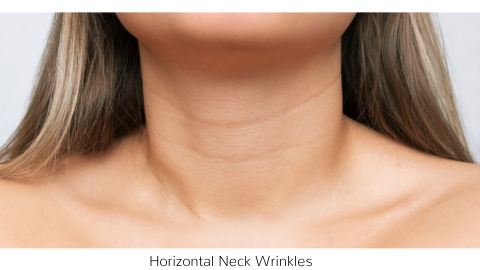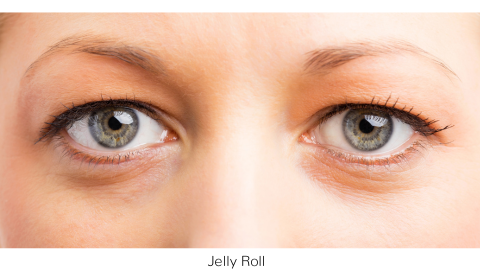Botox is widely recognized for its effectiveness in reducing wrinkles and fine lines by temporarily relaxing muscle contractions. While it is FDA-approved for use in three key areas—the forehead lines, glabellar lines, and crow’s feet—Botox is also frequently applied “off-label” to treat other concerns, such as tense jaw muscles (masseters), chin dimpling, a down-turned smile, and vertical neck bands, often with excellent results.
Given its versatility, one might assume Botox could address any facial wrinkle. However, there are certain areas where Botox is not the preferred treatment. In these cases, Dr. Brigham opts for alternative approaches, as Botox may be less effective, there could be better options available, or it might lead to unnatural outcomes. Read on to learn more about these specific areas and why Botox may not be the ideal choice.
Botox for Lip Lines
When considering treatments for smoker’s lines—the vertical lines that appear above the lips due to photodamage, volume loss, and repetitive muscle contractions—it’s important to choose the right approach. These lines often form from everyday activities like drinking through a straw, brushing teeth, or pronouncing certain sounds. While some providers use Botox to treat these lines, it’s crucial to exercise caution.
The perioral area, or the area around the mouth, is one place where it’s generally best not to inject Botox. Improper Botox injection in this area can lead to undesirable effects, such as a flaccid cheek, an asymmetrical smile, or even an incompetent mouth. Additionally, Botox in this area is not recommended for those who rely heavily on using their perioral muscles, such as singers or musicians who play wind instruments.
Rather than using Botox for smoker’s lines, Dr. Nathaniel Brigham MD recommends a flexible dermal filler like Revance Redensity or Juvederm Volbella. These options last longer, provide a more natural appearance, and offer better support.
Botox for Horizontal Neck Lines

Horizontal neck lines, often referred to as “tech neck,” are caused by the attachments of the fibromuscular layer connecting the face and neck muscles. These lines can develop due to posture habits, such as tilting the chin downward to look at electronic devices. While some providers use Botox to treat these lines, typically injecting 10 to 20 units spaced across the neck, it’s important to consider where not to inject Botox for optimal results.
At Aluma Aesthetic Medicine, we’ve found that Botox is less effective for treating horizontal neck lines compared to its use on platysmal bands, which are the vertical bands running down the neck. Additionally, injecting Botox too deeply beneath the dermis can lead to the weakening of underlying muscles involved in swallowing, which is a significant risk.
Rather than using Botox for horizontal neck lines, Dr. Nathaniel Brigham MD prefers to treat the neck area with Sculptra. This approach strengthens the thin skin of the neck and reduces wrinkles by stimulating collagen and elastin production, providing a more effective and long-lasting solution. On some occasions, a flexible dermal filler is the preferred choice for deep neck folds.
Botox For Undereye Wrinkles
The “jelly roll,” a term used to describe the slight bulge and wrinkles that appear under the eyes when smiling, is caused by the contraction of the orbicularis oculi muscle, which encircles the eye. While Botox can be injected into this muscle to relax it, thereby reducing the appearance of the jelly roll and smoothing the under-eye area, this treatment is not suitable for everyone.

Candidates with lower eyelids that do not quickly return after manual downward retraction, those prone to lower lid puffiness, or individuals who have undergone lower eyelid surgery are generally not ideal for Botox in this area.
Instead of using Botox to address under-eye wrinkles and hollows, Dr. Nathaniel Brigham MD prefers to treat this delicate area with a flexible dermal filler. This approach offers a smoother, more natural result while avoiding the potential risks associated with Botox in this sensitive region.
Where not to Inject Botox – Ever
Oral Commissures: The corners of the lips, known as the oral commissures, should not be treated with Botox. Injecting Botox here can cause the lip to sag and flatten the Cupid’s bow, leading to an unnatural appearance.It’ss best to avoid Botox in this are to maintain a natural looka.
Below Orbital Rim: The area under the orbital rim, or the upper eye socket, serves as a clear boundary for safe Botox injections. Injecting too low beneath this bony ridge can result in droopy eyes or brows, sostayingy above the orbital rimis essential when administering Botox.
Lip Body: The main body of the lips should never be injected with Botox. Doing so can cause lip asymmetry, reactive swelling, and functional issues. Keeping Botox away from the lip body is key to avoiding these complications.
Conclusion
While Botox is an incredibly versatile and effective treatment for many aesthetic concerns, it’s essential to recognize where not to inject Botox to ensure the best possible outcomes. Areas like the perioral region, horizontal neck lines, and under-eye wrinkles often require alternative treatments to achieve natural-looking, safe results. Dr. Nathaniel Brigham’s expertise at Aluma Aesthetic Medicine emphasizes the importance of choosing the right approach for each specific area. By understanding when and where Botox may not be the best option, patients can make informed decisions about their treatments, ensuring they achieve the desired enhancements without compromising their appearance or well-being.
If you are ready to experience exceptional Botox results in Portland, book your appointment with Aluma Aesthetic Medicine today and discover why our clients trust us for precise, professional, and natural-looking results.
Citations:
Carruthers, J., & Carruthers, A. (2001). BOTOX use in the mid and lower face and neck. Seminars in Cutaneous Medicine and Surgery, 20(2), 85.
Flynn, T. C., Carruthers, J. A., Carruthers, J. A., & Clark, R. E. (2003). Botulinum A toxin (BOTOX) in the lower eyelid: Dose-finding study. Dermatologic Surgery, 29(9), 943.
Carruthers, J., Carruthers, A., Monheit, G. D., & Davis, P. G. (2010). Multicenter, randomized, parallel-group study of onabotulinumtoxinA and hyaluronic acid dermal fillers (24-mg/ml smooth, cohesive gel) alone and in combination for lower facial rejuvenation: Satisfaction and patient-reported outcomes. Dermatologic Surgery, 36(Suppl 4), 2135.

